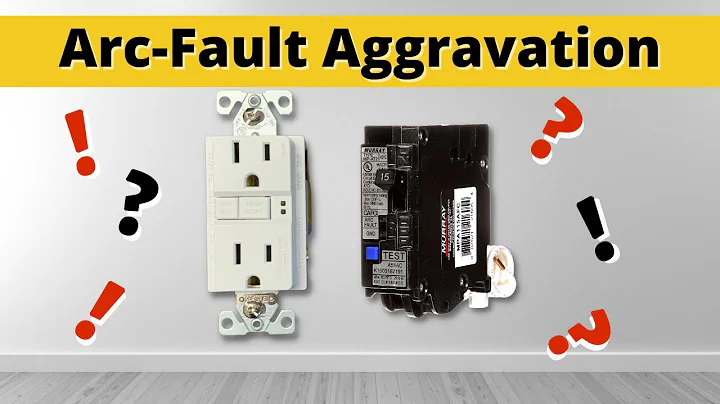Effective Swimming Pool Crack Repair Guide
Table of Contents
- Introduction
- Identifying the Crack
- Preparing the Crack for Repair
- Installing the Crack Stitch Staples
- Applying the Crack Sealant
- Injecting Foam behind the Wall
- Sealing the Crack with Surface Seal
- Testing for Pool Leaks
- Other Uses of Foam Insulation
- Conclusion
👉 Introduction
Maintaining a pool requires regular inspection and timely repairs to ensure its longevity. One common issue that pool owners face is cracks in the pool structure. In this article, we will guide you through the process of crack repair for pools in Plano, Texas. We will discuss the steps involved, from identifying the crack to applying the necessary sealants. So, let's dive in and learn how to effectively repair pool cracks!
👉 Identifying the Crack
Before proceeding with the repair, it is essential to identify the cracks in your pool. The cracks may vary in size and location, and they can be subtle or more apparent. To accurately detect them, a thorough dive and dye testing are conducted. This ensures that the cracks are properly assessed, and the repair process can be tailored accordingly.
👉 Preparing the Crack for Repair
Once the cracks are identified, it is time to prepare them for repair. Using an angle grinder with a 4-inch blade, a slot is cut stitch-wise into the crack. This technique provides structural strength and prevents the crack from pulling apart. Carbon fiber staples, specifically designed for concrete construction, are then inserted into the crack. These staples come with high tensile strength and are non-corrosive, ensuring a long-lasting solution.
👉 Installing the Crack Stitch Staples
For optimal reinforcement, the crack stitch staples are installed in a crossway pattern whenever possible. However, if the pool's curvature restricts crossway installation, the staples are inserted lengthwise. Although the strength may differ, both orientations provide the necessary support to prevent further crack development. The installation of these staples ensures that the crack remains securely stabilized throughout the repair process.
👉 Applying the Crack Sealant
After the crack stitch staples are in place, a specialized sealant is applied inside the crack. This sealant is carefully flushed into the crack and left to set for around 2 hours. Once cured, it becomes sandable, allowing for a smooth finish. The purpose of this sealant is to prevent foam leakage and ensure that the injected foam fully penetrates the crack, sealing it effectively.
👉 Injecting Foam behind the Wall
To reinforce the repair further, foam injection is performed behind the wall. Small ports are drilled through the center of the crack, allowing foam to be injected. The foam serves as a secondary barrier, sealing the crack from the backside to the inside of the pool. This process ensures complete penetration and a thorough repair. The foam expands significantly, filling the crack and providing added strength and stability.
👉 Sealing the Crack with Surface Seal
Once the foam injection is complete, the crack is sealed with a surface seal product. This two-part epoxy creates a protective barrier on the outside of the crack. It effectively prevents the foam from escaping through the crack and maintains the integrity of the repair. The surface seal product ensures a secure and long-lasting solution, leaving no room for further cracks or leaks.
👉 Testing for Pool Leaks
Pool owners often wonder if their pools have leaks. While evaporation is a common culprit, leaks can occur. A simple test can be conducted to check for leaks. Fill a 5-gallon bucket with water, mark it at a certain level, and float it in the pool. If the water in the bucket decreases at the same rate as the pool water, it is likely just evaporation. However, if it decreases at a faster rate, leaks may be present, and professional assistance should be sought.
👉 Other Uses of Foam Insulation
Foam insulation has numerous applications beyond pool repairs. It is commonly used to seal leaks in storm drains and other areas prone to water leakage. Additionally, foam insulation enhances the energy efficiency of houses. Knowing these versatile uses can help explore other areas where foam can play a crucial role in maintaining and insulating various structures.
👉 Conclusion
Repairing pool cracks is a vital part of pool maintenance. Identifying the cracks, using carbon fiber staples, applying sealants, injecting foam, and sealing the crack's surface ensure a successful repair. Regularly testing for leaks and exploring other uses for foam insulation can help pool owners maintain a functional and long-lasting pool. Remember, if you encounter significant pool issues, it's always wise to consult professionals for a thorough assessment and repair.
Highlights
- Proper identification of pool cracks is crucial for a successful repair.
- Carbon fiber staples provide structural strength and prevent cracks from worsening.
- Sealants and foam injection ensure complete penetration and effective sealing.
- Testing for pool leaks can help differentiate between evaporation and actual leaks.
- Foam insulation has various applications and is not limited to pool repairs.
FAQs
Q: How do I identify cracks in my pool?
A: A thorough inspection by diving and conducting dye testing can help detect cracks in pools effectively.
Q: Can I repair pool cracks myself?
A: While minor cracks can be DIY repaired, it is recommended to consult professionals for major pool repairs to ensure the best outcomes.
Q: How long does the crack repair process take?
A: The duration of the repair process depends on the extent and complexity of the cracks. A professional assessment can provide a more accurate time frame.
Q: Are carbon fiber staples better than other repair methods?
A: Carbon fiber staples offer high tensile strength, are non-corrosive, and provide long-lasting stabilization to the cracked pool structure.
Q: How can foam insulation be used for other purposes?
A: Foam insulation is versatile and can be used to seal leaks in storm drains, insulate houses, and more. Exploring its various applications can prove beneficial.







